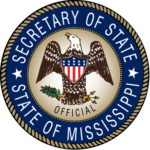MISSISSIPPI GULF COAST
NATIONAL HERITAGE AREA

The Mississippi Gulf Coast National Heritage Area Program (MGCNHA) is funded by the National Park Service and the State of Mississippi. It supports economic growth in the state’s lower six counties by focusing on the natural, cultural and historical resources in the Mississippi Heritage Area.
MGCNHA Director
Rhonda Price
Charnley-Norwood House
The Charley-Norwood House is a late 19th-century cottage that heralds a turning point of residential architecture in the United States, whose authorship has been claimed by both Louis H. Sullivan (1856-1924) and Frank Lloyd Wright (1867-1959.) This house exhibits many of the traits that would come to be associated with 20th-century Modernism, such as functionally, spatial flow, natural materials, fenestration that erases inside-outside parries and integration into the landscape. Compared to its contemporaries, the Charnley-Norwood House exhibits a degree of clarity and austerity not witnessed before in residential design. This beautifully restored historic site is managed by the Mississippi Gulf Coast National Heritage Area. Tours are given upon request by emailing heritage@dmr.ms.gov.
Nature-Based Tourism
The Nature-Based Tourism (NBT) Plan for Coastal Mississippi plans for years of economic growth in Mississippi’s coastal counties. While encouraging a local culture of natural resource stewardship, it also proposes strategic planning, marketing and management actions to achieve an optimal balance between growth and conservation. It also serves as a model for the development of a statewide Nature Tourism strategy. Under the management of the MDMR, the outcomes of the plan to date are: increased professional and marketing resources for nature tourism businesses, the establishment of the Gulf Coast Outpost recognition program and the development of a Blueways design guide to increase natural recreation opportunities for locals and tourists.
2024 Heritage Community Grants
The Mississippi Gulf Coast National Heritage Area (MGCNHA) program of the Mississippi Department of Marine Resources is seeking applicants for its 2024 Heritage Community Grants program.
To help accomplish the goals and objectives of its Management Plan, the MGCNHA offers matching grants to provide and leverage funding for innovative projects across the region that preserve, interpret, and develop heritage resources that expand economic opportunity.
The purpose of the MGCNHA Heritage Community Grant program is to enhance, conserve, and provide connectivity to cultural and natural resources of Mississippi’s six coastal counties through identification, interpretation, and promotion. Residents and visitors alike benefit from increased awareness and appreciation of the environment, history, culture, traditions, and lifestyles of the Mississippi Gulf Coast. To date, the MGCNHA has funded 56 grants totaling $1,073,265 and leveraging another $1,514,905 in matching contributions from local governments and private sector with a total investment of $2,588,170. These grants have funded projects in all six counties of South Mississippi.
The range for each grant application request starts at $5,000 and may not exceed $75,000. Funding for the MGCNHA Heritage Community Grant program is provided by the federal government through the National Park Service.
Entities that are eligible to apply include city, county, state governments, universities, and non-profit groups. Recognized Gulf Coast Outpost Businesses are also eligible to apply.
There will be a conference call at 10 a.m. Friday, February 16, 2024, for those who have questions about the applications. For call-in information please email heritage@dmr.ms.gov.
Applications are available at dmr.ms.gov and msgulfcoastheritage.ms.gov. The deadline for submissions is 5:00 p.m. Thursday, March 14, 2024.
The Mississippi Department of Marine Resources is dedicated to enhancing, protecting and conserving marine interests of the state by managing all marine life, public trust wetlands, adjacent uplands and waterfront areas to provide for the optimal commercial, recreational, educational and economic uses of these resources consistent with environmental concerns and social changes.


